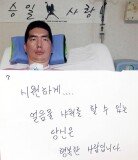True Meaning of Collection

Album collector Seong Si-wan, 47, took the plane to Madrid, Spain in February 1993, against all odds. He was looking for information about Spanish art rock band Los Canarios, which was active in the 1960s and 1970s. He had already introduced the bands albums several times on a radio program he hosted. Hoping to collect more information about the band, he flew to Spain.
He traveled all over Madrid for four days, but his efforts were fruitless. Dejected, he took the subway with no particular plan and got off at a station with a large number of people. He entered a dingy record shop near the station.
He found a pile of old newspapers in the corner of the shop. While going through the papers, he lost track of time. He even forgot about his flight time. Eventually, he found three articles about Los Canarios.
Why did I make such a fuss over collecting a few newspaper articles? You obviously dont know the pleasure of collecting. I was heavily into art rock at that time and wanted to collect all related things, whether it was an album or a newspaper article, said Seong.
○ True collection is more than merely gathering
People like Seong are considered professional collectors.
Professional collectors not only enjoy the items they collect, but the process of collecting itself. They say that true collecting is more than the mere gathering of items. It is a labor of sorting and classifying the objects of your devotion with your own authentic style. True collectors collect items in consideration of themes and genres.
For most collectors, the number or size of items is not important.
The most common question I get asked is how many albums I have collected. But to be honest, I dont know, said Seong.
The value of 1,000 albums can be bigger than that of 1 million albums. What matters more than the number is whether or not you have collected the right items, added Seong.
Seong has collected rare albums for more than 40 years since he was in elementary school. He worked as a radio DJ from 1982 to 1999 and continues to introduce various genres of music while running Si Wan Records, a record distribution company. He will hold an album collection exhibition entitled Seong Si Wan Collection 40/30/20, until the end of the month at Daelim Contemporary Art Museum, Tongui-dong, Jongno-gu, Seoul.
○ No pain, no collection
Professional collectors say that the best part of collection is its arduousness.
Record shop owner Lee Seung, 46, is into collecting folk music albums and collectible figures. The labor you put into it to get what you want is more like pleasure, says Lee.
He lost consciousness on a street in Germany in 1995 while traveling there to collect albums. He collapsed from sunstroke due to the fierce heat wave, which swept Europe bringing with it the hottest summer in 20 years.
Lee was able to return to his hotel with the help of people around him, and after regaining consciousness from a cold shower, he again went out to search for albums. On his way to Korea, he was able to wear a smile of satisfaction because he found an album that he desperately wanted. He has a total of 28,000 albums, including 200 albums from the 99 limited edition of the world folk music series.
When I travel overseas to search for items, I cannot help but push myself as I have a tight schedule and there is no guarantee that I can find the item that I am looking for. It is more difficult than military training (laughs). I get completely exhausted and my body is aching by the time I return home. But the pleasure of discovering something that I want is beyond compare, Lee said.
○ Collection, a way of recording traces of the present
Collecting can also be a means of bringing back fond memories and recording traces of the present. Collected items themselves are valuable, but it is also great fun to look back on the past while recalling the background and context of the collection.
Thirty-six-year-old artist Sasa collects Bomulseom, a magazine that she was fond of as a child. She is in the process of re-collecting as her mother threw away hundreds of Bomulseom she collected while in elementary school.
I remember going all the way to the publishing company in Gwangjin-gu alone by bus from my home in Banpo, Seocho-gu, Seoul in order to buy the first issue of Bomulseom. My mother was angry at me because I came home late that day. But I was all the more happy to have the magazine. I still frequently visit secondhand bookstores and online auction sites to find Bomulseom. But I havent been able to collect many because it is very hard to get, says Sasa.
nuk@donga.com







